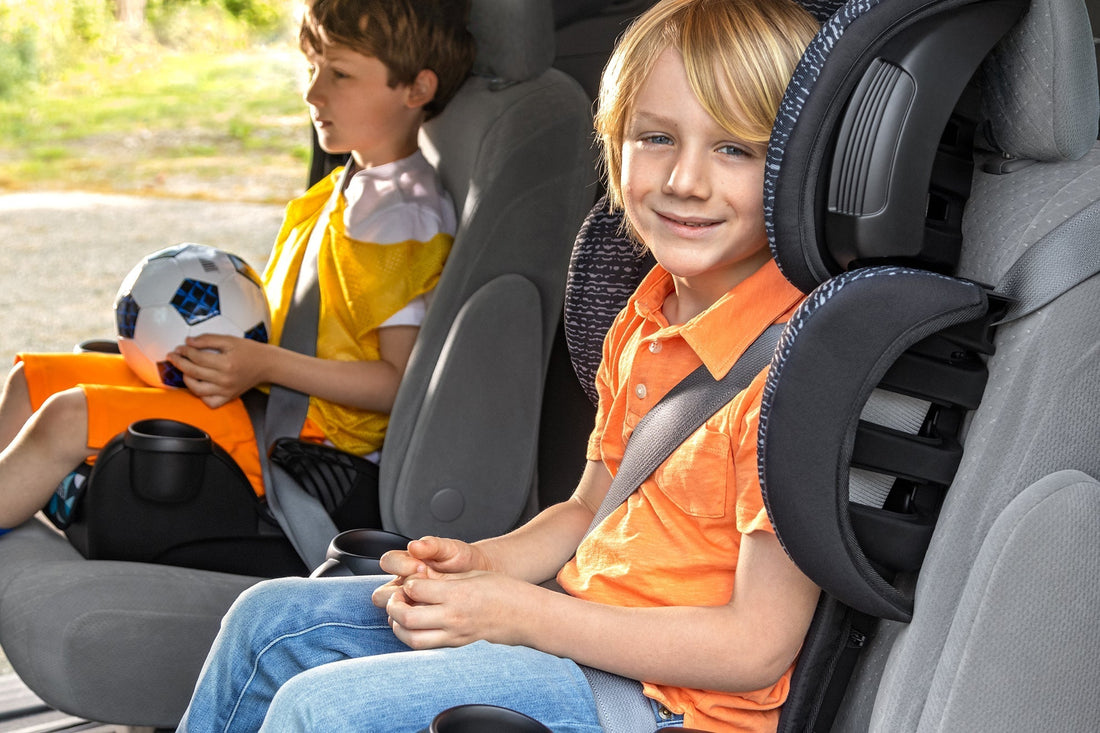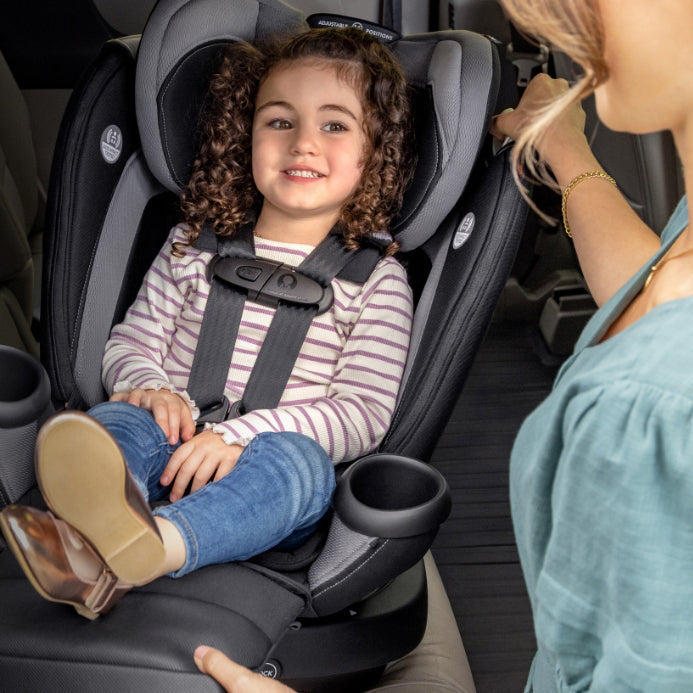
Car Booster Seats: A Crucial Step for Child Safety
To reduce injuries, boosters help guide seat belts onto children’s strong bones
This post is authored by Evenflo's partners at the Juvenile Products Manufacturers Association (JPMA)
Let’s get right to the point: motor vehicle crashes are a leading cause of child deaths and injuries in the United States. In 2020, 1,093 children were killed in crashes, 3% more children lost than in 2019. Another 139,042 children were injured in 2020 crashes, and some of these injuries were serious enough to require hospitalization and ongoing medical treatment. The vast majority of these deaths can be prevented through correct use of seat belts, car seats and booster seats, and many injuries can be reduced in severity or avoided.
What science teaches us about crashes and injuries
Basic physics tells us that an object in motion tends to remain in motion, at its original speed, unless acted upon by an outside force. Applying that to vehicle crashes, that means that if your vehicle is traveling 40 miles per hour, passengers are also traveling at that speed. When a crash happens and the vehicle is abruptly stopped by that outside force, everyone and everything in the vehicle continues moving at 40mph until something stops them. Our outside stopping force could be a seat belt and airbag or the restraining features of a child car seat or belt positioning booster seat, but for unrestrained passengers it could be the hard parts of the vehicle interior, the windshield or the pavement outside of the vehicle.
Crashes are violent events, and the crash energy generated may require hundreds or even thousands of pounds of restraining force to stop us. That is where car seats, seat belts and booster seats come in. Correctly selected and used restraints help to manage that crash energy by:
- Keeping us in the vehicle, since ejected passengers are 4x as likely to die and 14x as likely to sustain spinal cord injury.
- Contacting strong body parts that are better able to withstand crash forces, rather than vulnerable but important parts of the body.
- Distributing crash forces across a wide area of the body, so the injury-causing energy is not concentrated on a small area.
- Allowing passengers to benefit from crumple zones and other protective vehicle features, so more energy is transferred away from humans
- Protecting the head, neck and spinal cord, which are vital body parts that cannot be easily repaired or treated.
Booster seats help guide seat belts onto strong bones
Considering the above, vehicle seat belts should ideally be positioned on strong  areas of the body – like the hips and upper thighs – and the belts should also spread crash forces across additional areas of the body like the chest and collar bone. The problem is that children who have outgrown their car seats with harnesses are usually too small for correct fit to occur. Their upper legs are not as long as the vehicle seat is deep, so kids tend to slouch for the comfort of being able to bend their knees. This slouching makes a poorly fitting belt even worse, often causing the lap belt to be on the abdomen where crash forces can cause injury to the liver, spleen, intestines or other vital organs. It also contributes to the shoulder belt touching the neck, and the discomfort that causes may encourage a child to relocate it behind the back or under the arm, interfering with protecting the head, neck and spinal cord.
areas of the body – like the hips and upper thighs – and the belts should also spread crash forces across additional areas of the body like the chest and collar bone. The problem is that children who have outgrown their car seats with harnesses are usually too small for correct fit to occur. Their upper legs are not as long as the vehicle seat is deep, so kids tend to slouch for the comfort of being able to bend their knees. This slouching makes a poorly fitting belt even worse, often causing the lap belt to be on the abdomen where crash forces can cause injury to the liver, spleen, intestines or other vital organs. It also contributes to the shoulder belt touching the neck, and the discomfort that causes may encourage a child to relocate it behind the back or under the arm, interfering with protecting the head, neck and spinal cord.
For older children who have outgrown the height or weight limit of a car seat with a harness, a booster seat provides an important transition until the vehicle seat belts fit correctly on their own. A booster seat positions a child on the vehicle seat and helps guide the vehicle lap and shoulder belts onto the strong parts of the body that can better withstand crash energy. It keeps the lap belt low on the hips and touching the thighs. It positions the shoulder belt across the chest and collar bone without discomfort, so the head and neck can be protected. A booster can even provide a more natural place for a child’s knees to bend, so slouching for comfort is unnecessary.
Get the guidance and assistance you need
Excellent tools and resources are available to provide needed information. As with any car seat, booster seat instructions must be followed to use the safety device as designed and tested. The vehicle owner’s manual provides additional information about seat belts and other features in rear seating positions. All states require car seat use, and most expressly require that booster seats are used by older children.
The vehicle owner’s manual provides additional information about seat belts and other features in rear seating positions. All states require car seat use, and most expressly require that booster seats are used by older children.
To supplement those information sources, many booster manufacturers include frequently asked questions, educational videos and graphics, and live product support from trained specialists. Additional assistance is available, usually at no cost, from a trained Child Passenger Safety Technician (CPST) in your local area or through virtual appointments.
Conclusion
The bottom line is that booster seats reduce the risk of serious injury by 45% compared with just seat belts, for children ages 4 through 8. We strongly recommend that you use a booster seat until the vehicle seat belts fit correctly on their own, carefully read and follow the instructions that come with it and your vehicle owner’s manual, and always follow the requirements of your state law. For additional information and assistance, please consult the below resources.
Resources:
Manufacturer customer service:
https://www.jpma.org/page/carseathelp
Additional information from manufacturers:
https://www.jpma.org/page/CPSWeek
Car seat requirements by state:
https://www.iihs.org/topics/seat-belts/seat-belt-law-table
Find a Child Passenger Safety Technician:
https://www.nhtsa.gov/equipment/car-seats-and-booster-seats#installation-help-inspection
YOU MAY ALSO LIKE:
